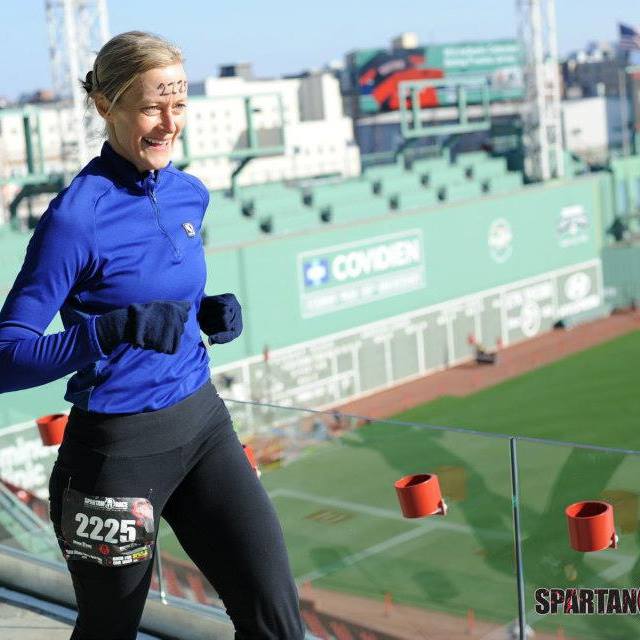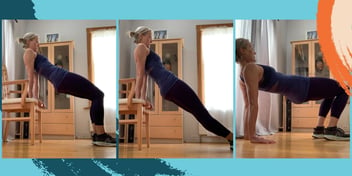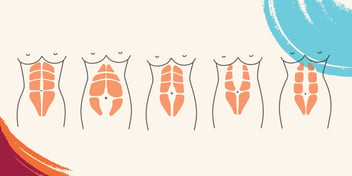DIASTASIS RECTI SERIES PART 2
Author Kim Raubenheimer is a certified Nutritionist and a trainer specializing in Diastasis Recti. After self-diagnosing her own diastasis in 2008, she went on a journey to discover everything she could about the condition. She continues to coach individuals - especially busy moms - and was eager to share her knowledge with Levelle Nutrition.
This post is the second in a 3-part series about diastasis recti, a medical condition that occurs when the left and right abdominal muscles separate from each other, creating a gap in the middle of the abdomen. It's most commonly seen in pregnant women and postpartum women, but can also occur in men and women who engage in repetitive or strenuous abdominal exercises without managing their intra-abdominal pressure.

Start with the Basics
Posture, alignment and breathing are the foundation you need to begin to address a Diastasis Recti. Focus on making sure you're aligned and breathing properly, before adding on exercises. Otherwise, even daily movements can undo the benefits.
Any exertion without proper form and breathing can contribute to causing a diastasis. I, for example, am an upper ab gripper and was constantly holding my breath during exertion and stress, especially in my 20s.
Try to recognize what movement makes your symptoms worse and decrease the stress and the load on the body. Look at ALL of your movement patterns, how you breathe, how you breathe while moving, how you stand, and how you sit. Pay attention especially when you are tired (no sleep with little ones, work, life, etc.) and are not as apt to be mindful.
If you think you have a diastasis, contact your OB/PT — especially if you have symptoms. Meanwhile, back off to easier levels of any exercise that is giving you trouble.
Positive Posture and Alignment
- How do you stand and sit?
- Do you favor a side and hike up one hip when standing?
- Do you stand with anterior tilt? Or tuck your bottom under?
Stand with your feet hip distance apart. Your joints should be stacked: ears overs shoulders over hips over knees over ankles. Your weight should be evenly distributed between your feet, as well as balanced between your heels and toes. All your toes should be grounded. Take pictures of yourself from head to foot, from the side as well as from the back and front.
Your lower ribs should be in line with your hip bones (Anterior Superior Iliac Spine, or ASIS).
Your ASIS should be on the same vertical plane as your pubic bone.
IMAGE CREDIT: SHUTTERSTOCK 2006242475
Remember that good posture is a habit that takes practice to develop. Be patient with yourself and keep working to improve your posture over time.
Don't Forget to Breathe
Are you a thoracic chest breather? Thoracic breathing is a type of shallow breathing that occurs when a person primarily uses their chest muscles to inhale and exhale, rather than engaging their diaphragm. Often post pregnancy, we are used to thoracic breathing due to the growing baby pushing everything up, creating limited space to breathe deeply.
When breathing correctly, you should be able to expand your ribs (front, side and back) with your inhale. Make note of one side being tighter than the other. If that's the case, stretch or roll your back on a ball, either against a wall or on the floor. Start with a tennis ball and progress to a lacrosse ball.
Practice a 360 Breath
You can perform 360 breathing in various positions, some of which I've outlined below. This should get you really in tune with your breath, and ideally your ribs should move front, side and back when inhaling.
SEATED
Make sure your joints are stacked, and your hands placed so that your fingers are toward the front and your thumbs are on your back. Shoulders are relaxed.
ON YOUR SIDE
Lie on either side, with your head on a pillow so your cervical spine is neutral. Your knees should be bent to 90 degrees. Place your top hand on the side of your ribs with your fingers to the front and your thumb on the back ribs. Bring your awareness to your ribs as you breathe. Inhale, filling the lungs completely with air. Feel the ribs move, expanding front, side and back. Exhale and feel your ribs contract, with the lower ribs moving toward your hips and your belly toward your spine. Do not lift your shoulders on the inhale. Switch sides and repeat. You may find one side does not expand as much as the other.
ON YOUR BACK
Lie with your (preferably clean) feet up on the wall, with your knees bent to 90 degrees. This is a great position for resting the psoas muscle. Follow the instructions above. You can see the alignment in the video below.
Hands-On Feedback
Not sure you're doing it correctly? Watch this video for a detailed explanation on how to use your hands to check your 360 breath.
How you breathe during any exertion will impact your core. Make sure you aren't holding your breath or inhaling while engaging your muscles. Think exertion = exhale.



.jpg?width=735&height=537&name=Shutterstock_2006242475%20(1).jpg)



